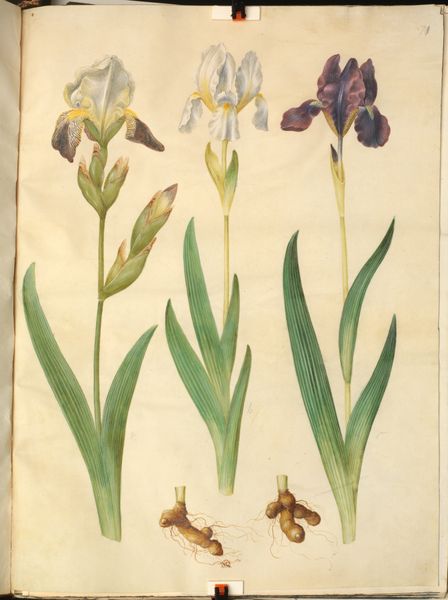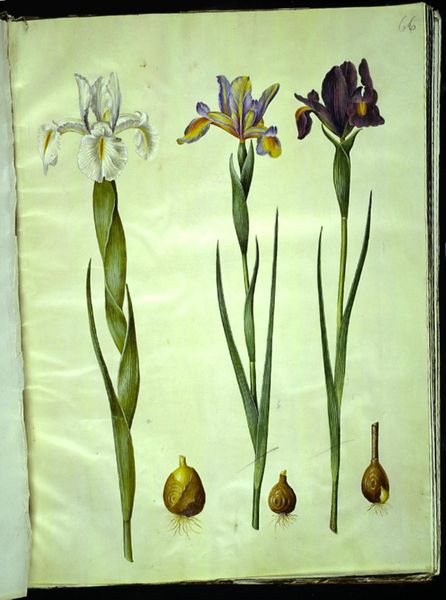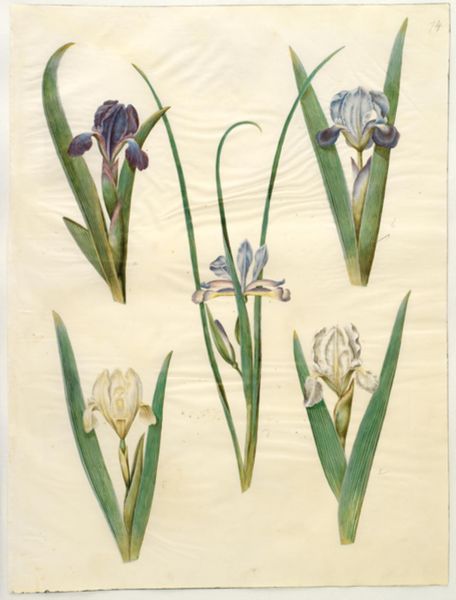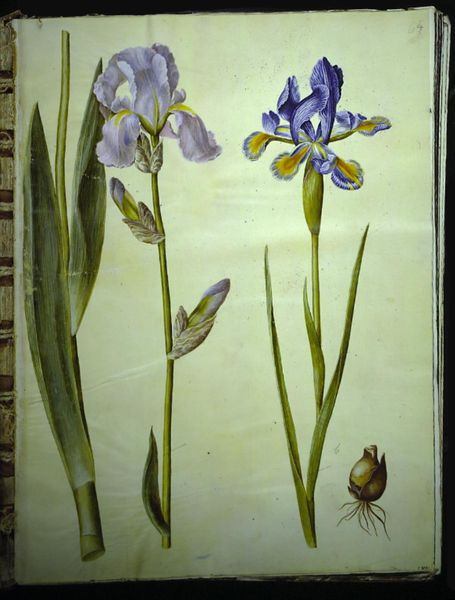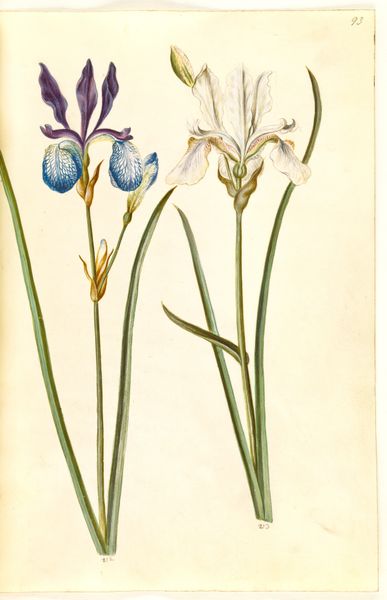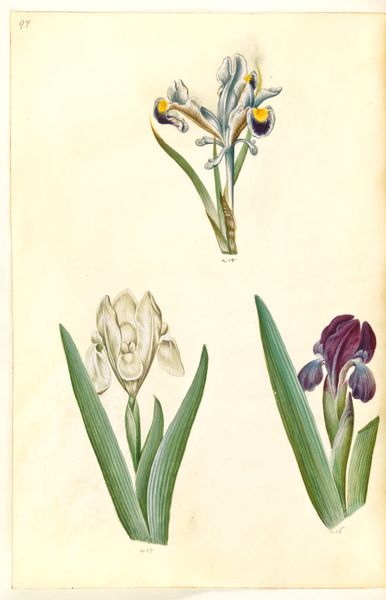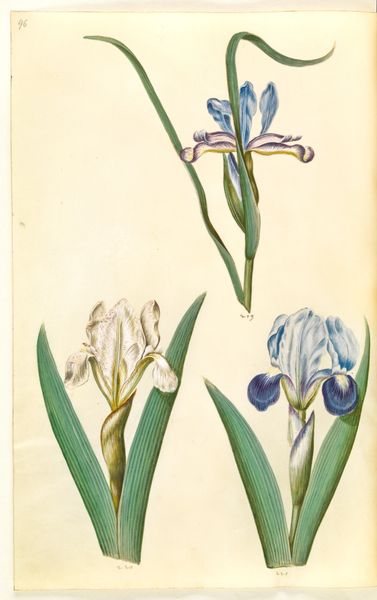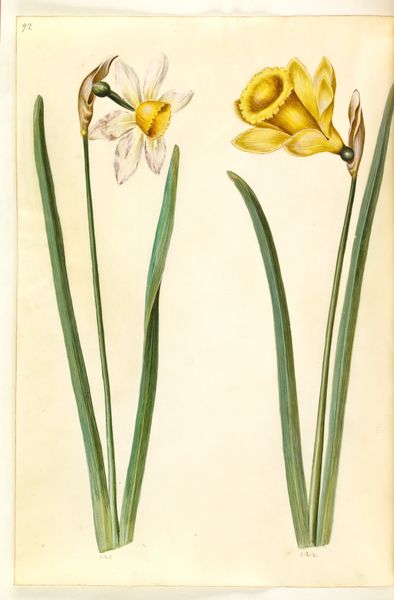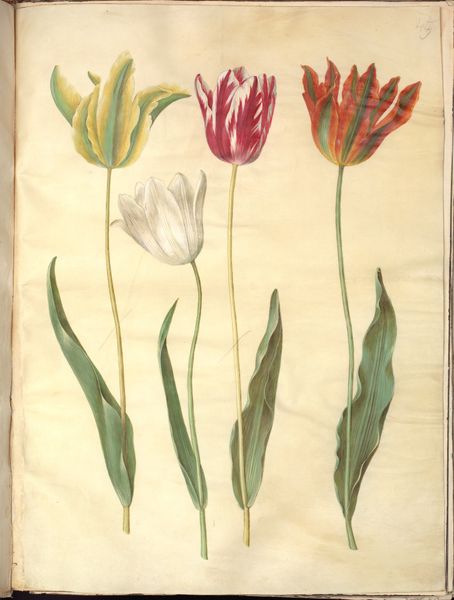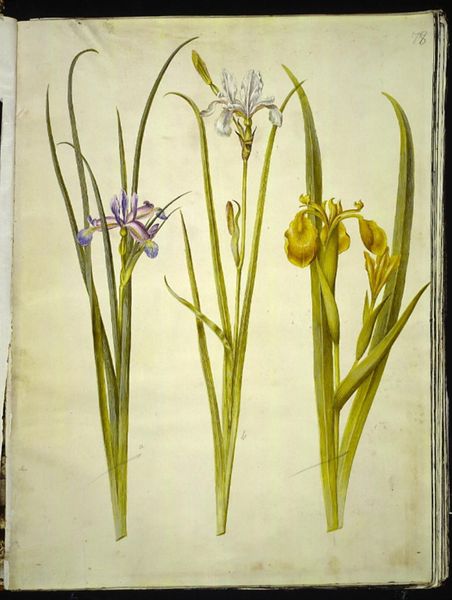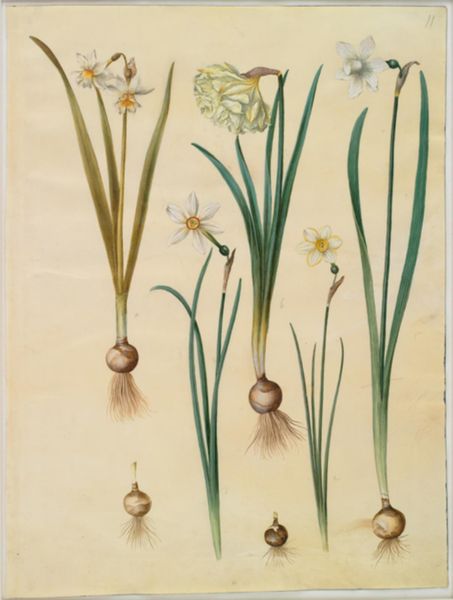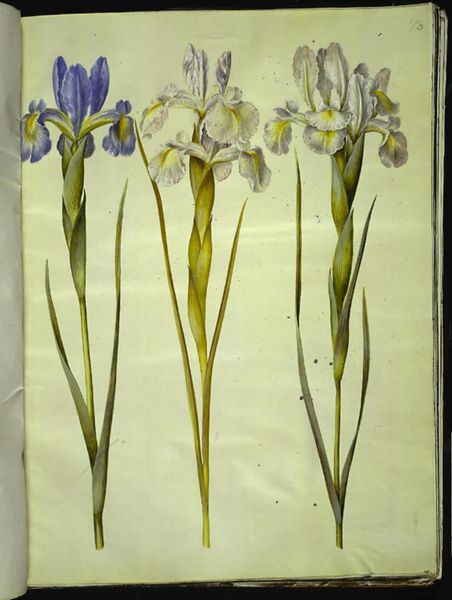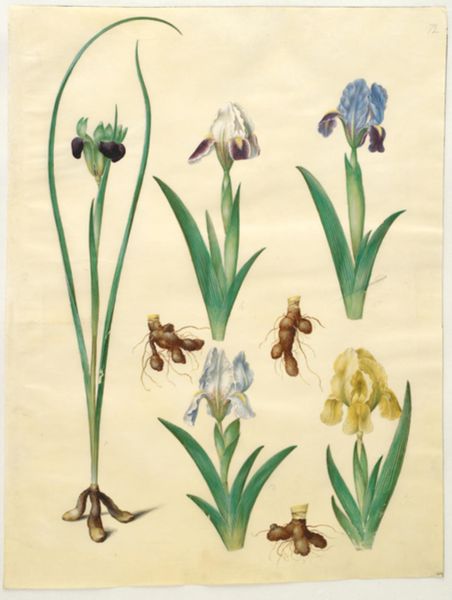
Iris ×sambucina (hylde-iris); Iris ×amoena (iris-hybrid) 1649 - 1659
0:00
0:00
drawing, gouache, watercolor
#
drawing
#
water colours
#
gouache
#
watercolor
#
watercolour illustration
#
northern-renaissance
#
botanical art
#
watercolor
Dimensions: 505 mm (height) x 385 mm (width) (bladmaal)
Curator: Standing before us is Hans Simon Holtzbecker's exquisite botanical study, "Iris ×sambucina (hylde-iris); Iris ×amoena (iris-hybrid)," a work created sometime between 1649 and 1659. Editor: It strikes me immediately as quite precise, almost clinical. But not cold. There's a tactile quality in the way he's rendered the textures of the leaves and roots using watercolor and gouache, isn't there? You can almost feel the earth clinging to them. Curator: Absolutely. Consider how botanical art, during Holtzbecker's time, functioned both as scientific documentation and aesthetic object. The details matter greatly because their reception involves contemporary modes of classifying the natural world. The iris was a key element within discourses of medicine, class and empire. Editor: So, it’s more than just a pretty picture of flowers; it’s about production, labour and ultimately consumption. Look closely, you'll see the care invested in depicting the materiality of the plant itself – the vein-like structures in the leaves, the rough, gnarled roots – showcasing an understanding of botany itself as much as the aesthetic quality of this watercolor drawing. The level of observation to document that rhizome system would have required patience, too. Curator: Indeed. The Northern Renaissance saw a burgeoning interest in naturalism and the meticulous cataloging of the natural world. Holtzbecker doesn’t simply illustrate an Iris; he offers a visual index to its cultural value and place in larger ecological systems. The very choice of materials – the layering of gouache over watercolor – also signifies class status within production, distribution and value in ways unique to its era of production. Editor: I am particularly intrigued by how he grounded each stem in a little nugget of the plant’s root system; it makes me think of the labor that went into cultivation, not just the artistry in depicting it, the social dimensions of this work become all the more apparent. This piece reminds us that artistic skill wasn’t always separate from craft, production or, ultimately, science. Curator: A good reminder to consider the artwork’s role within societal norms during a period that significantly informs contemporary debates regarding biodiversity and its role in both political identity and global market economies. Editor: It leaves me thinking about what we choose to document and how the act of observation itself carries political, aesthetic and material weight, and not least a reflection of cultural status and access at play at any given historical moment.
Comments
No comments
Be the first to comment and join the conversation on the ultimate creative platform.
